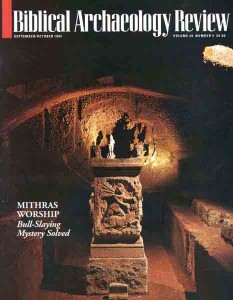“Gas, Food and Lodging”—or the ancient equivalent—could have been plastered on billboards outside the Qumran complex in the Judean Desert. The site was neither monastery, fortress, villa, nor home to scroll-writing Essene scribes, as many scholars have claimed: Rather, suggest authors Alan Crown and Lena Cansdale, it was an ancient hostelry, where traders, their camels and pack-asses laden with frankincense and myrrh from the east, could rest and dine on their way to and from Jerusalem. Qumran’s location on a critical trade route between the Dead Sea and Jerusalem would have made it particularly attractive to traders, write Crown and Cansdale. In “Qumran—Was It an Essene Settlement?” they dismiss the common identification of the site, arguing that ancient historical texts, archaeological evidence from Qumran and information contained in the Dead Sea. Scrolls all disprove the theory that it was an Essene community.
Already a library member? Log in here.
Institution user? Log in with your IP address.



